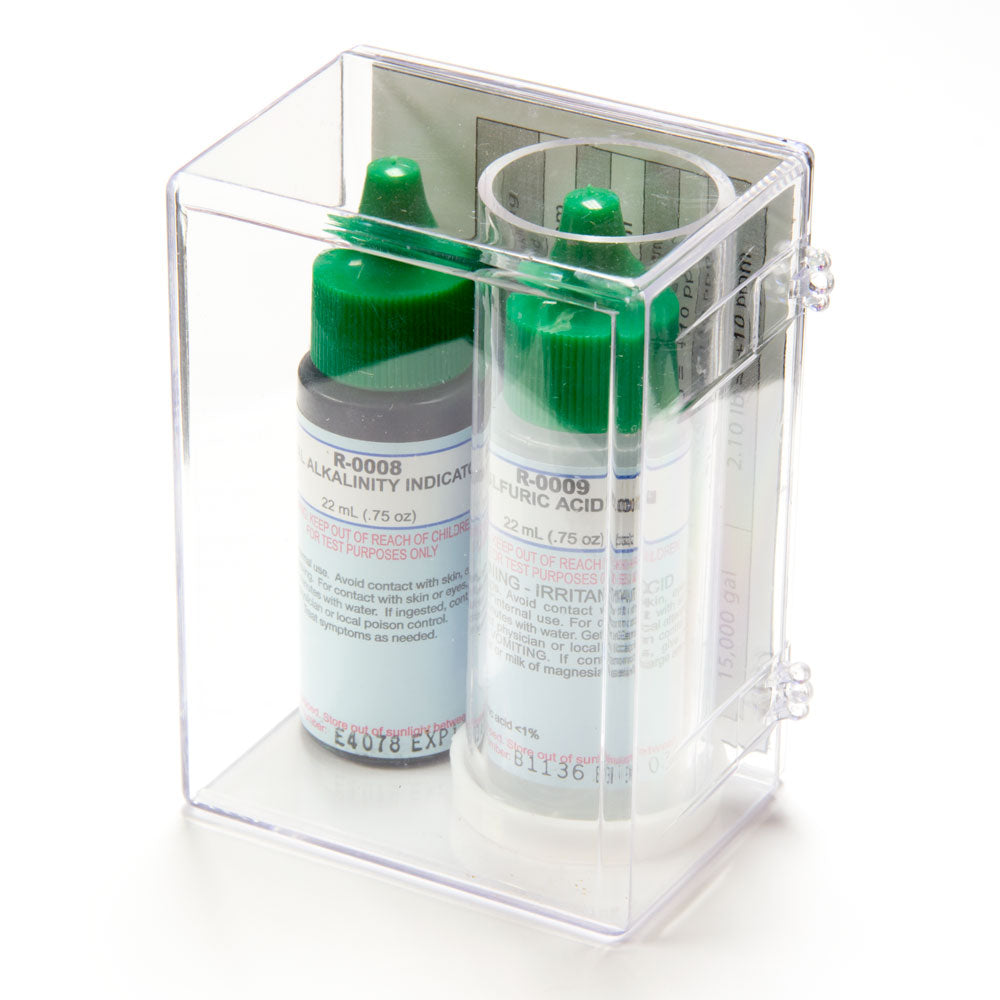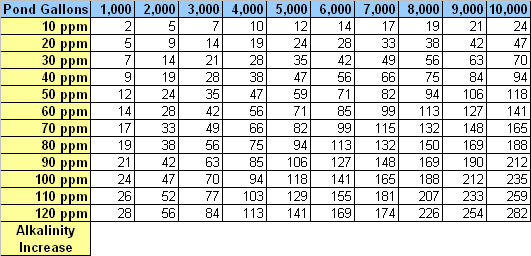Alkalinity Test Kit
Alkalinity Test Kit
Couldn't load pickup availability
If we were able to only use one test kit. This would be it! Alkalinity is the core for everything, from pH to the overall health of your filter. Simple and accurate. Includes a chart to show how much baking soda to add to bring your pond back to ideal levels.
Share


Collapsible content
More Information
The key to controlling the pH is to buffer the water. A buffer is anything that will bind up any free ions released into the water. Adding baking soda (sodium bicarbonate) is a quick fix to a pH crash. You could also add oyster shell, crushed coral, dolomite, or limestone, but these all react much slower and need to be placed near moving water to be effective. To check how buffered the pond is, you can test the Alkalinity.
Alkalinity can mean two different things. When the pH is over 7.0, it is called alkaline. Alkalinity can also be used to refer to the buffering capacity or the concentration of bicarbonate in the water.
The Alkalinity or the concentration of bicarbonate in the water should measure between 90 and 120 ppm. At that level, there is little chance the pH will crash. When the Alkalinity drops down to 30 ppm, your pH can begin to swing both up and down. Adding baking soda is an easy way to increase the Alkalinity. To raise the Alkalinity with baking soda, follow the dosing chart below. The amount to be added is in ounces.

Example: If you had a 3,000-gallon pond with an alkalinity level of 30 ppm and you wanted to raise the Alkalinity to 100 ppm, you would need to increase the level by 70 ppm. Referring to the chart above, you can see that by adding 49 oz of baking soda to the pond, you would reach the desired level of 100 ppm.
Note: If the pond alkalinity is low, it can also prevent the beneficial bacteria for the biological filter from forming. When starting up a new filter, always check the Alkalinity. Additionally, no matter how much baking soda you add to the pond, the pH will not go above 8.3. At that pH, the baking soda will begin to precipitate out of solution. This is important to know because if you experience a severe pH crash and the fish are dying, you don’t need to worry about measuring out the exact amount of baking soda to adjust the pH. Just throw the whole box in the pond. We promise you, the fish will not be upset with you.
In conclusion, having a test kit for each of the basic four water parameters is invaluable to maintaining your pond. In just ten minutes, you can understand what your water quality is. As stated at the beginning, “taking the steps necessary to maintain good water quality in your pond is time well spent.”
Great test! Sacramento Koi is an amazing business.


